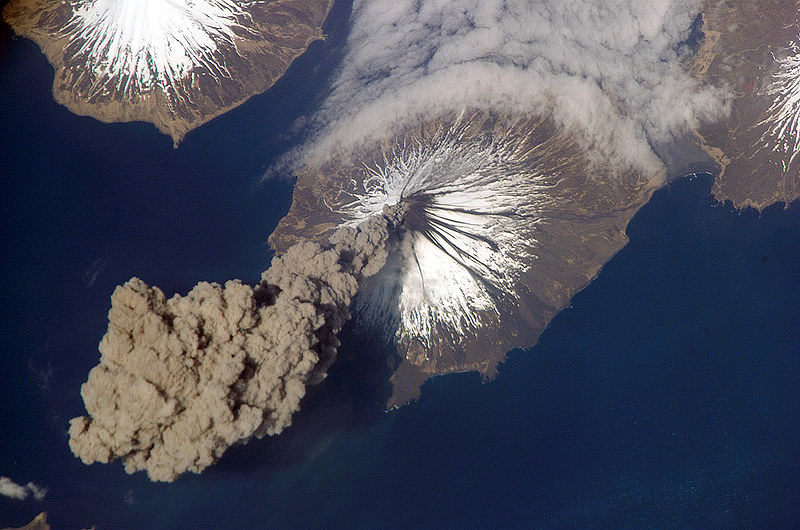[/caption]
When volcanoes erupt, they can release large quantities of lava, rocks, hot gasses and volcanic ash. This volcanic ash is made up of pulverized rock and glass particles smaller than 2 millimeters in diameter. Once ejected into the air, it can travel for hundreds of kilometers before coming back to Earth.
There are two kinds of volcanic ash: fine ash, with particles smaller than 0.063 mm, and course ash, with particles smaller than 2 mm. Larger rocks aren’t kept aloft and rain down around the volcano’s cone during an eruption. The largest rocks are called volcanic bombs, and they can be as large as 6 meters across.
Ash is created when solid rock shatters and magma separates into tiny particles during an explosive eruption. The violent eruption together with steam tears apart the rock surrounding the volcano’s vent, and fires it up into the air – sometimes many kilometers into the air.
Once the volcanic ash is in the air, obscures light from the Sun, turning the sky hazy and yellow. It can even make spectacular sunsets. A large enough eruption can spread volcanic ash around the world, cooling the Earth for several years. The smallest particles can be held aloft in the Earth’s atmosphere for years, and spread around the planet on high-altitude winds.
Volcanic ash is part of one of the biggest dangers with volcanoes: pyroclastic flows. These occur when hot gas and ash erupt from a volcano and flow down its flanks at high speed. These flows can have temperatures higher than 1,000 degrees C, and travel at more than 700 km/hour. It’s impossible to outrun a pyroclastic flow.
When the ash finally lands around a volcano, it can cause further problems. Just a few centimeters of ash is heavy enough to collapse roofs, and kill animals and crops. If there’s rain, the ash turns into a sticky, muddy mess that will take months to clean up.
We have written many articles about volcanoes for Universe Today. Here’s an article about different types of volcanoes, and here’s one about different types of lava.
Want more resources on the Earth? Here’s a link to NASA’s Human Spaceflight page, and here’s NASA’s Visible Earth.
We have also recorded an episode of Astronomy Cast about Earth, as part of our tour through the Solar System – Episode 51: Earth.

